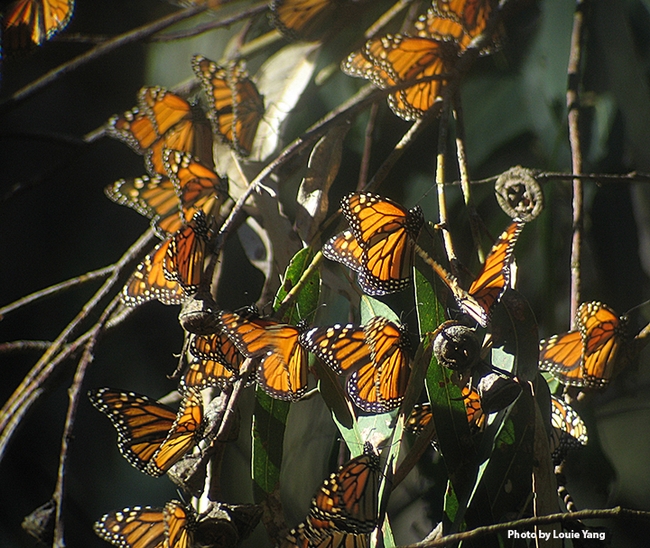- Author: Kathy Keatley Garvey
Ever seen a honey bee foraging on a daffodil?
In the early spring, blooms are few and far between. Daffodils are not usually considered "bee plants." But if nothing else is blooming, bees will head over to the daffodils.
On a Feb. 6th visit to the UC Davis Ecological Garden at the Student Farm, we watched a lone honey bee--probably from the Harry H. Laidlaw Jr. Honey Bee Research Facility apiary on Bee Biology Road--gathering pollen in a nearby bed of daffodils.
The bee's heavy load of daffodil pollen looked like pure gold.
Norm Gary, UC Davis emeritus professor of entomology, writes about the importance of pollen in his book, Honey Bee Hobbyist: The Care and Keeping of Bees: "The importance of pollen in the health and vigor of the honey bee colony cannot be overstated. Bees need a balanced diet. Honey satisfies the bees' carbohydrate requirements, while all of the other nutrients--minerals, proteins, vitamins, and fatty substances--are derived from pollen. Nurse bees consume large amounts of pollen, converting it into nutritious secretions that are fed to developing larvae. During an entire year, a typical bee colony gathers and consumes around 77 pounds (35 g) of pollen."
Daffodils belong to the genus Narcissus, named for a handsome hunter, who, in Greek mythology, fell in love with his own reflection (the word "narcissism" means "excessive self-love").
There was a lot of love that day in the daffodil bed.
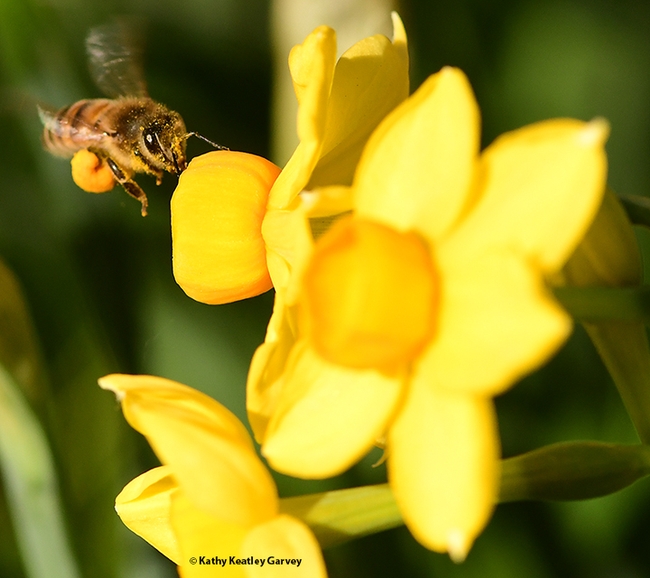
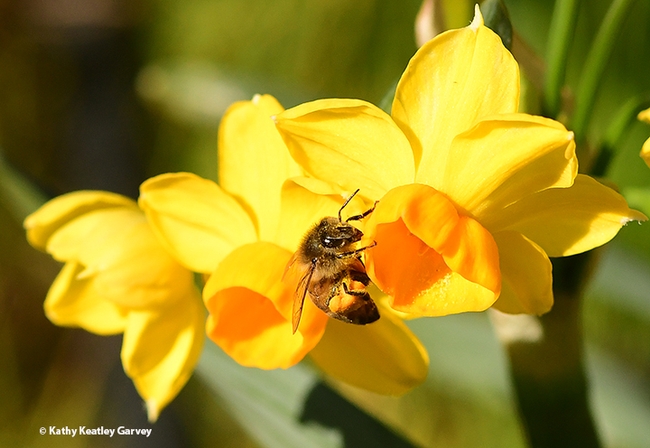
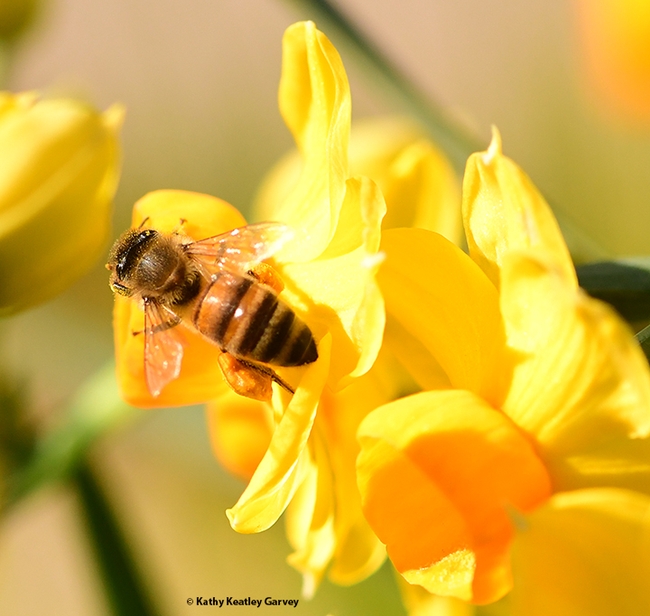
- Author: Kathy Keatley Garvey
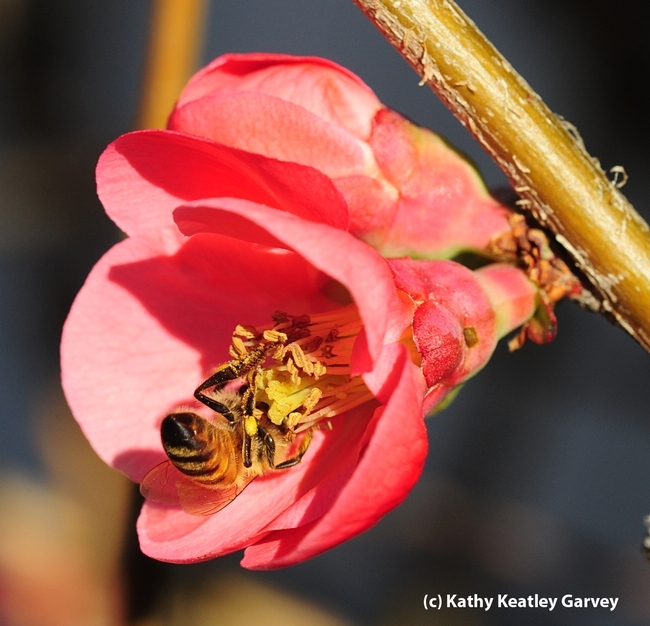
What is the UC Davis Biodiversity Museum Day?
It's a free, open-to-the-public, science-based day that annually takes place the Saturday of Presidents' Day weekend and showcases nearly a dozen museums or collections. It's an opportunity for campus visitors to see exhibits and displays at various points on campus and converse with the scientists.
This year is the 11th annual. However, due to COVID-19 pandemic restrictions and UC Davis policies, the 2022 Biodiversity Museum Day will be held at one site--the UC Davis Conference Center, 550 Alumni Lane--and will be from 11 a.m. to 3 p.m., Sunday, March 6. What's also different? It's geared for undergraduates and other members of the UC Davis community instead of the general public from surrounding counties. (The general public can look forward to the UC Davis Picnic Day on April 23, 2022 when many of the same museums and collections are scheduled to be featured.)
Participating collections at the UC Davis Biodiversity Museum Day include, but are not limited to, the Bohart Museum of Entomology, Häagen-Dazs Honey Bee Haven, Arboretum and Public Garden, Museum of Wildlife and Fish Biology, California Raptor Center, Paleontology Collections, Botanical Conservatory, Center for Plant Diversity, Nematode Collections, and Department of Anthropology Museum.
At the March 6th event, COVID guidelines for UC Davis, Yolo County and the state of California--including appropriate mask wearing, UC Davis symptom surveys, vaccination records or negative COVID tests--will be followed.
But back to "bee my valentine."
Honey bees are an integral to at least three of the museums/collections:
- The Bohart Museum of Entomology, part of the UC Davis Department of Entomology andNematology, houses a worldwide collection of eight million insect specimens, including honey bees, bumble bees, sweat bees and more. The insect museum is located in Room 1124 of the Academic Surge Building on Crocker Lane, but it's currently closed to the public due to COVID pandemic.
- The Häagen-Dazs Honey Bee Haven, a half-acre bee garden operated by the UC Davis Department of Entomology andNematology, is located next to the Harry H. Laidlaw Jr. Honey Bee Research Facility on Bee Biology Road, west of the central campus. The late Robbin Thorp, distinguished emeritus professor of entomology, recorded more than 80 species of bees here.
- The UC Davis Arboretum and Public Garden is a 100-acre site that's the pride and joy of the campus community. It's frequented by nature lovers, walkers, hikers and bicyclists, among others--and bees! The 100-acre site also boasts the much applauded 100 Arboretum All-Stars.
How can you help the bees as well as other fauna and the flora associated with UC Davis Biodiversity Museum Day?
A UC Davis Crowdfunding Project is underway until 11:59 p.m., Feb. 28. Contributions from $5 on up are welcome, said project managers Tabatha Yang, education and public outreach coordinator for the Bohart Museum of Entomology, and Rachel Davis, a GATEways horticulturist and museum scientist at the UC Davis Arboretum and Public Garden.
"Donations will not only help us sustain the free, in-person event, it will enable our student interns to take science outreach to a whole new level," they said. "The goal of our event is to connect people from all walks of life to science and the biodiversity surrounding them. All donors will be recognized on the Biodiversity Museum Day social media accounts with a shout-out post."
Any amount is appreciated: $5 will get you into the Fantastic Yeasts category; $10, the Sprout (Valley Oaks) category; $25, the Bumble Bee category; and $50, the Jeweled Spider Fly category. Other categories include Atlati, California Condor, and Smilodon. The goal: $5000.
Key expenses include:
- Volunteer support ($2000)
- Event rentals ($1500)
- Event materials ($1500)
To donate, access https://bit.ly/3HPhSaA. You can be anonymous in name or contribution, or you can have your name listed on the donor wall in honor of someone, or in memory of someone.
Or you can just say "Bee my Valentine."
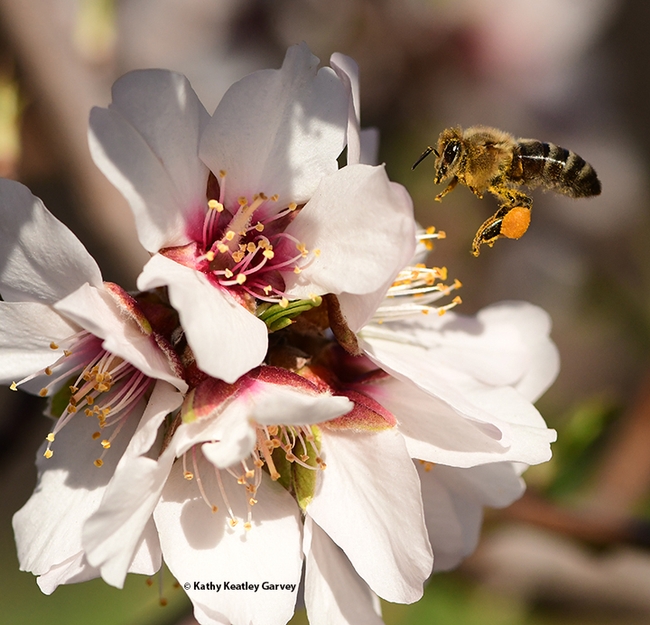
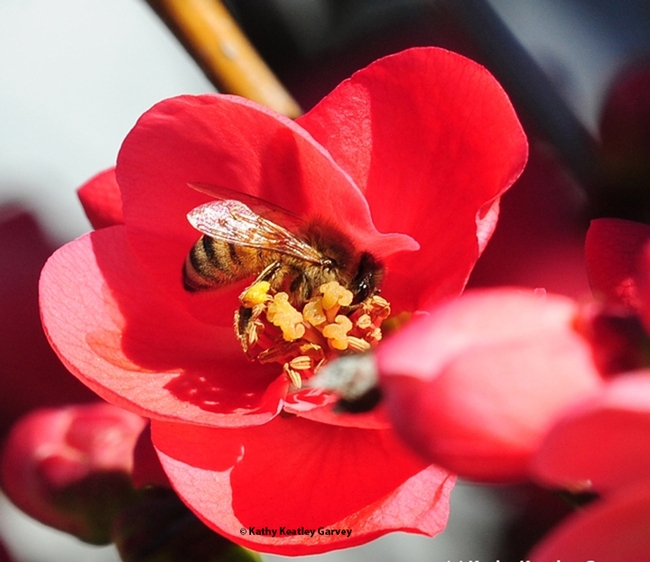
- Author: Kathy Keatley Garvey

ACP they call it. A native of southern Asia, it was first detected it in the United States (Florida) in 1998.
ACP serves as a vector or carrier for the deadly citrus greening disease or Huanglongbing (HLB), a bacterial disease that infects and kills citrus trees.
"ACP arrived in Southern California in 2008 and has fully infested that region," according to the UC Statewide Integrated Pest Management Program. "HLB disease was first detected in Los Angeles in 2012."
You may remember when the equivalent of a five-alarm fire went off when the citrus greening disease was found in California. The California Department of Food and Agriculture (CDFA) sounded the alarm.
What's new in the research?
Research molecular biologist Michelle Heck of the USDA's Agricultural Research Service (USDA-ARS) in Ithaca, N.Y., will discuss "Challenge-Driven Innovation in Citrus Greening Disease Research" when she presents a virtual seminar hosted by the UC Davis Department of Entomology and Nematology at 4:10 p.m., Pacific Time, Wednesday, Feb. 16.
The seminar is open to all interested persons. The Zoom link is https://ucdavis.zoom.us/j/99515291076.
Heck, who focuses her USDA-ARS research on the discovery and characterization of insect vector-plant-pathogen interactions, serves as a lead scientist and research molecular biologist with the Emerging Pests and Pathogens Research Unit, located in the Robert W. Holley Center for Agriculture and Health, Ithaca.
The Asian citrus psyllid is a threat to America's citrus industry, according to a USDA Fact Sheet. "Burned tips and twisted leaves result from an infestation on new growth. Psyllids are also carriers of the bacterium that causes Huanglongbing (HLB) disease, also known as citrus greening disease, spreading the disease to healthy citrus plants. Citrus greening is one of the most serious citrus plant diseases in the world. Once a tree is infected, there is no cure."
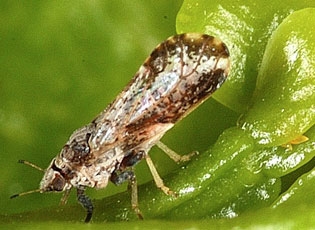
"Research planning involves novel, exceptionally difficult, team research that is subdivided into multiple phases with agency stakeholders," Heck says. Her research "integrates developed knowledge into applied agricultural practices to create novel management strategies for vector-borne plant diseases and the insect vectors." She conducts her studies in support of the USDA-ARS NP 304 Action Plan: Crop Protection and Quarantine, Problem Statement 3A2, a systems approach to environmentally sound pest management.
Heck, who holds a bachelor's degree in biology from Boston University, received her doctorate from.Cold Spring Harbor Laboratory, Cold Spring, N.Y. She completed her postdoctoral training in vector biology and mass spectrometry-based proteomics. Her research on protein interactions and protein transport in plants and insects spans more than 20 years, resulting in an international reputation as a vector biology authority skilled in the management of vector-borne plant diseases. Heck is a lead in the USDA-ARS Citrus Greening Grand Challenge, the agency's coordinated national response to combat citrus greening disease and the agency's scientific representative on the National Cotton Council's Cotton Leafroll Dwarf Virus Task Force.
Heck has published more than 50 peer-reviewed journal articles, book chapters, and several patents. Her peers have recognized her scientific excellence with a number of awards, including a 2017 Presidential Early Career Award for Scientists and Engineers from the Obama White House Office of Science and Technology Policy.
For technical issues involving the seminar, contact Siddique at siddique@ucdavis.edu.
Resources:
- Asian Citrus Psyllid, UC Statewide Integrated Pest Management Program (UC IPM)
- Asian Citrus Psyllid and Huanglongbing Disease (UC IPM)
- Asian Citrus Psyllid Regulation and Quarantine Boundaries, California Department of Food and Agriculture (CDFA)
- Citrus Pest and Disease Prevention, CDFA
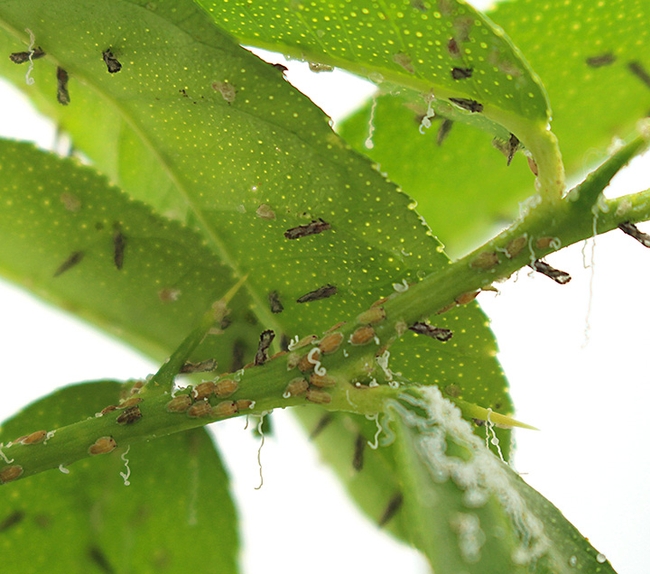
- Author: Kathy Keatley Garvey
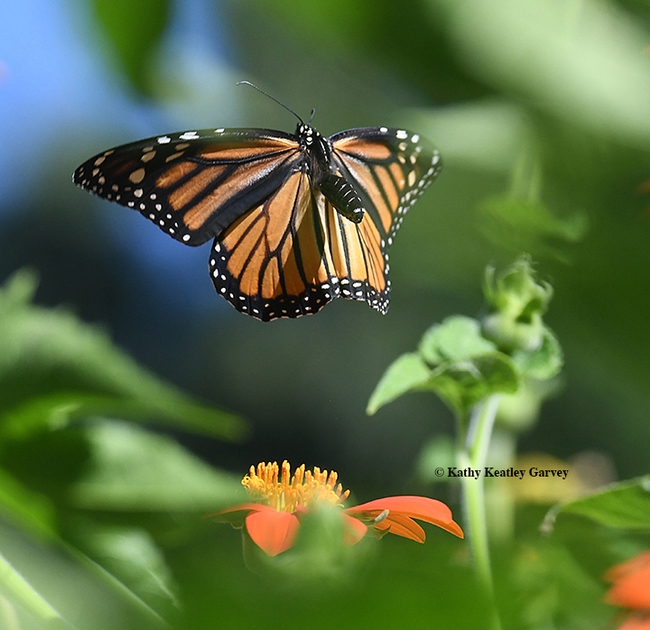
"Guess, who's back?" has nothing to do with the catchphrases uttered by Arnold Schwarzenegger and Jack Nicholson. (Remember when Schwarzenegger promised "I'll be back!" in the 1984 science fiction film, The Terminator, and Nicholson vowed "I'm back" in the 1980 psychological horror film, The Shining?)
Who's back?
Monarch butterflies, Danaus plexippus. Well, at least one monarch is back in the area.
Shapiro sighted a female monarch today in West Sacramento, Yolo County. "It was in good shape, not looking stressed. Of course, Asclepias (native milkweed) has not broken ground."
It's an early sighting, which probably means the coastal clusters may be breaking up early due to the warmer weather than usual.
Shapiro, who maintains a research website at http://butterfly.ucdavis.edu/, has monitored butterfly population trends on a transect across central California since 1972. The 10 sites stretch from the Sacramento River Delta through the Sacramento Valley and Sierra Nevada mountains to the high desert of the Western Great Basin.
The previous plexippus he's seen before Feb. 10 include:
- Jan. 29, 2020 (See Bug Squad blog)
- Feb.1, 2014
- Feb. 9, 2006
- Feb. 9, 1976
"And lots in February after the 10th."
Meanwhile, most of the 250,000 monarchs tallied in California during the Thankgsiving Count, directed by the Xerces Society of Invertebrate Conservation, are still overwintering. Note that this is a 100-fold increase from the 2020 Thanksgiving Count when Xerces recorded a mere 2000.
Western monarchs generally begin clustering at their overwintering sites along coastal California in the late fall, peaking in size in late November or early December. Mating season usually begins around Valentine's Day. The monarchs traditionally depart their overwintering sites in late February or the beginning of March and head inward.
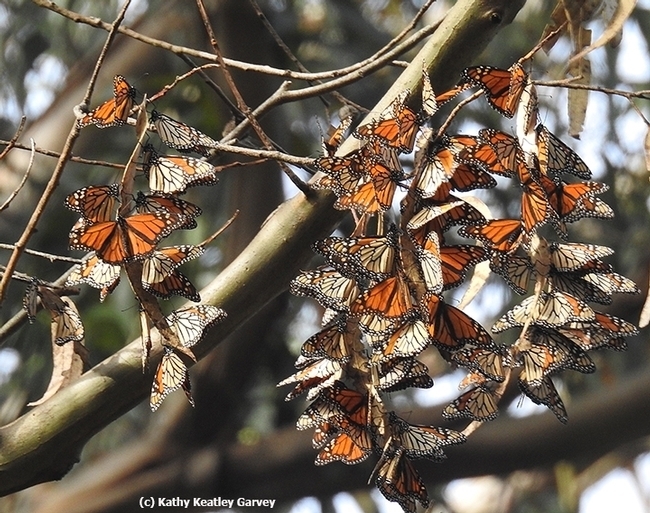
- Author: Kathy Keatley Garvey

California's 2021 western monarch Thanksgiving count, directed by the Xerces Society of Invertebrate Conservation, recorded 250,000 overwintering monarchs, as compared to a mere 2000 in 2020.
Executive producer and host Ira Flatow of Science Friday set out to "unpack the news" for his listeners. On Feb. 4, he interviewed community ecologist Louie Yang, professor, UC Davis Department of Entomology and Nematology, and a faculty member of the Center for Population Biology. (Listen to the interview, 'How Long Will California's Butterfly Boom Last?')
"OK, so how did the population bounce back so dramatically?" Flatow asked. "And is this number a blip on the radar or the start of better times for the beleaguered butterfly? Here to help us unpack the news, Dr. Louie Yang, a professor and ecologist at the Department of Entomology and Nematology, UC Davis."
"It seems reasonable to say that an increase of this magnitude would probably require a series of fortunate conditions throughout the breeding season that would sustain population growth across multiple generations," the UC Davis professor told him, adding "What we've seen is a long-term trajectory of declining populations, even before the recent population variability."
Yang focuses his research on "understanding the seasonal dynamics of milkweed-monarch interactions. How do monarch caterpillars develop on their milkweed host plants? And what are the conditions that allow them to develop well and survive to adulthood? And what are the conditions that cause lower survivorship?"
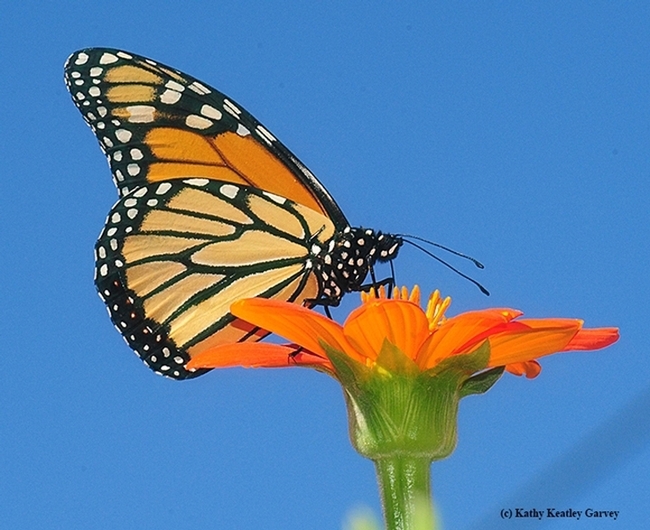
Bottom line. The 100-fold increase in monarch population may or may not be a sign of what's to come. As Yang said: "So we shouldn't be complacent or assume that populations will always bounce back from low densities...I think a lot of folks are breathing a sigh of relief that the population has increased as much as it has over the past year. And I think we all share that sense of relief and joy that the population has increased. But also, there is that note of caution that there is a lot about the dynamics of this population that we don't yet understand and we're still working on."
Social media responses to the podcast included: "Great podcast! I learned even more today about the timing of milkweed availability and monarch eggs--now I understand why late season eggs have a higher percentage of survivorship. Everyone should listen to Professor Yang's interview. It's just a little over 10 minutes, but packed full of information."
Louie Yang
Yang, who joined the UC Davis faculty in 2009, holds a bachelor's degree in ecology and evolution from Cornell University, (1999) and a doctorate from UC Davis (2006).
Lauded for his advising and teaching skills, in 2018 Yang received an international award from NACADA, also known as the Global Community for Academic Advising. He co-founded and co-directs the campuswide program, Research Scholars Program in Insect Biology, with UC Davis distinguished entomology professor Jay Rosenheim and professor Joanna Chiu, vice chair of the UC Davis Department of Entomology and Nematology,
Yang, born in Australia but raised in West Virginia, says on his website: "When I was in elementary school, I wanted to be a pet shop owner. In high school, I wanted to be a veterinarian. As a college freshman, I thought I wanted to make nature documentary films. As it turns out, I was really interested in ecology and evolution. After I graduated, I traveled and started a PhD. I've been faculty at the University of California, Davis since 2009. I'm still learning new things all the time."
His current research?"I am working to develop a temporally explicit view of ecology that examines how ecological communities combine complex, coordinated and changing interactions over time. I am particularly interested in the effects of climate change on species interactions, community responses to strong perturbation events, phenological cues and phenological shifts, and seasonal changes in the nature and outcomes of species interactions. I study several different organisms in a wide range of ecological communities, each of which contributes to a broader understanding of how species interactions change over time." (See The Yang Lab website.)
So, in today's Bug Squad, a brief spotlight on Professor Yang:
Question: "How long have you been doing scientific research on monarchs?"
Answer: "I visited the overwintering monarch population at the Coronado Butterfly Preserve in Santa Barbara in 2006, and I started doing research with them shortly afterwards."
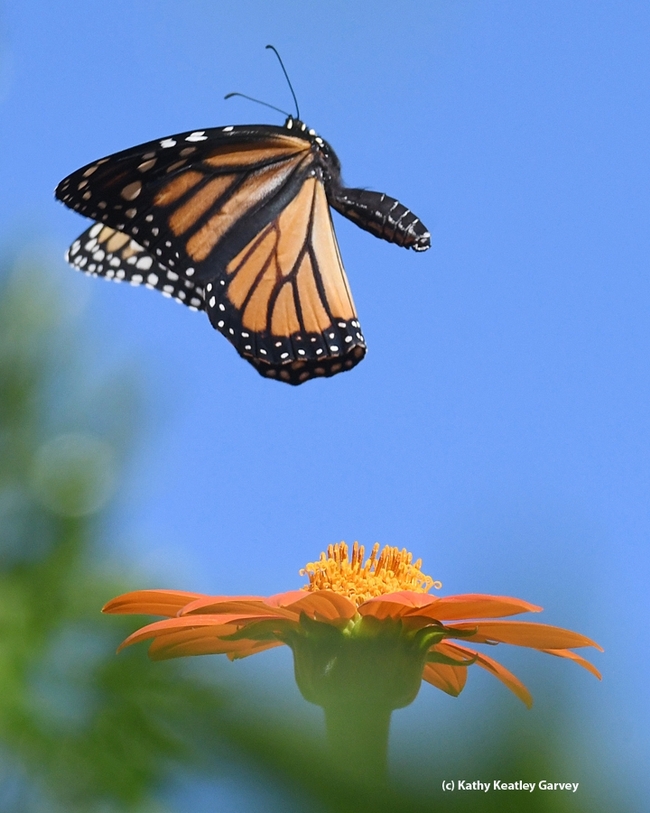
A: "Because monarch can travel long distances, it struck me that when they leave their overwintering grounds they might not have very good information about the environmental conditions at their destination. It seems like this lack of information could create the potential for phenological mismatches between the monarch and its host plant."
Q: "What are some of the results?"
A: "Broadly, our results indicate that western monarchs show “seasonal windows of opportunity”--periods in the year with increased developmental prospects. These seasonal windows are constrained by a combination of abiotic (i.e., climatic), bottom-up (i.e., host plant-related), and top-down (i.e., natural enemies-related) factors. In our region, we see two windows of opportunity (late spring/early summer and late summer/early fall) separated by a 'mid-summer slump' on their most common host plant, narrow-leaved milkweed (Asclepias fascicularis). However, plant traits matter: for example, the defensive traits of showy milkweed (Asclepias speciosa) tend to increase across the season, and the monarchs on this species only seem to show one early season window. On showy milkweed, success in the late season window seems to be constrained by host plant defensive traits. Our work has also shown that these seasonal windows appear to be constrained by different factors in the early and late part of each breeding season, and that climatic variation strongly shapes the timing and relative importance different limiting factors."
Q: "What is the role of tropical milkweed, Asclepias curassavica, in monarch conservation?"
A: "I've not studied this in detail myself, but there is a concern that tropical milkweed could change the life history of western monarchs and expose them to more diseases. Unlike our native milkweeds, tropical milkweeds don't senesce during the winter. They continue to grow year-round and are very attractive to monarchs. As a result, this non-native host plant might encourage monarchs to continue breeding longer into the winter than the would normally. In addition, because these milkweeds persist year after year, there are concerns that they can build up higher densities of Ophryocystis elektroscirrha spores, exposing monarch caterpillars to a greater risk of disease."
Q: "What can area residents do to help in monarch conservation?"
A: "I'd encourage folks interested in helping monarch conservation to learn as much as they can about the many and complex factors that can affect monarch populations. Recent variability in the western monarch population illustrates the potential for rapid declines and resilience in this population, but it also shows us the limits of our current understanding about the ecology of western monarchs. Ecology ain't rocket science--it is much more complicated. There is a lot we don't yet know, but there is also a lot that has become clearer over time. We probably know enough now to say that the combined and interactive effects of climate change, land use change, novel environmental chemicals and the global transport of organisms have played a role in the decline of monarch butterflies and many other insects. Scientists will continue working to understand this in more detail, but working now to limit those drivers makes sense."
Q. "What milkweed do you recommend folks should plant in Central California?"
A. "I'd encourage folks to learn about and cultivate the species of milkweed that grow wild in their local area. California has a remarkable diversity of milkweed species, and each occupies a unique niche. Websites like iNaturalist can help folks learn about the species that grow naturally in their area. Visiting established populations of wild milkweed will give folks a sense for the specific habitats that these milkweeds need to survive and thrive. The Xerces Society has also compiled some great information how and where to cultivate milkweed in California." (See Xerces Society website.)
